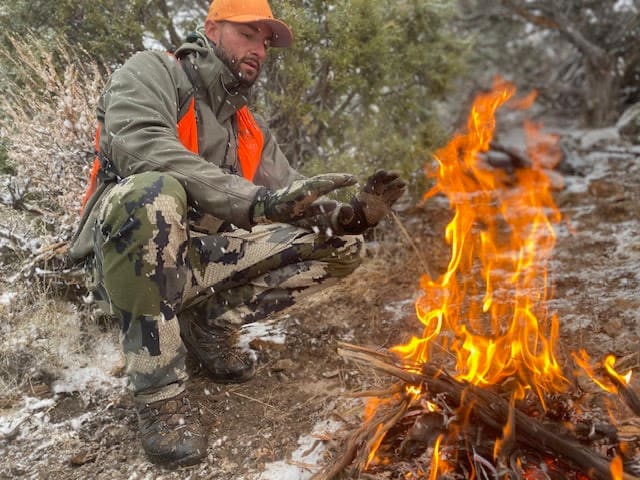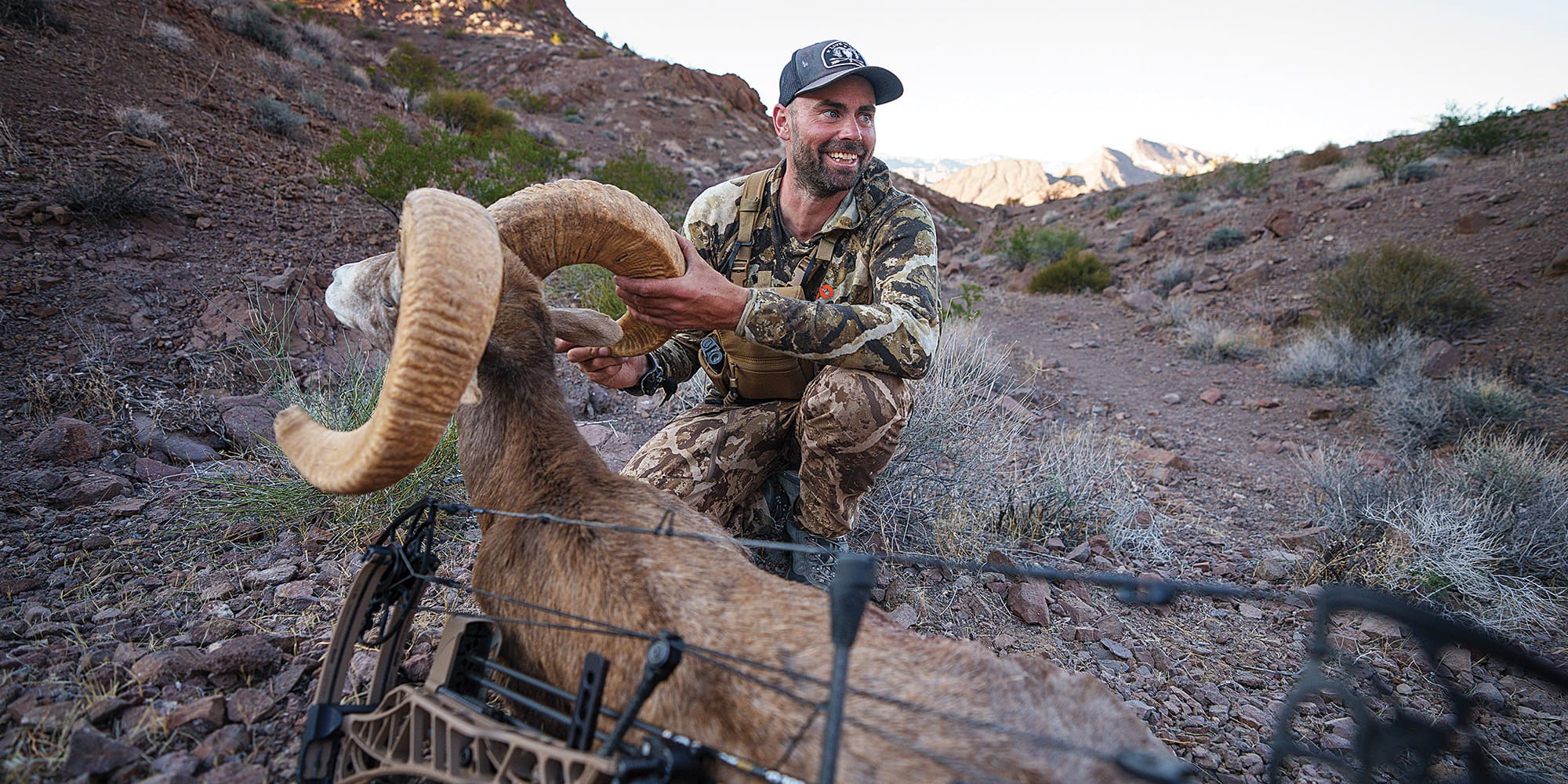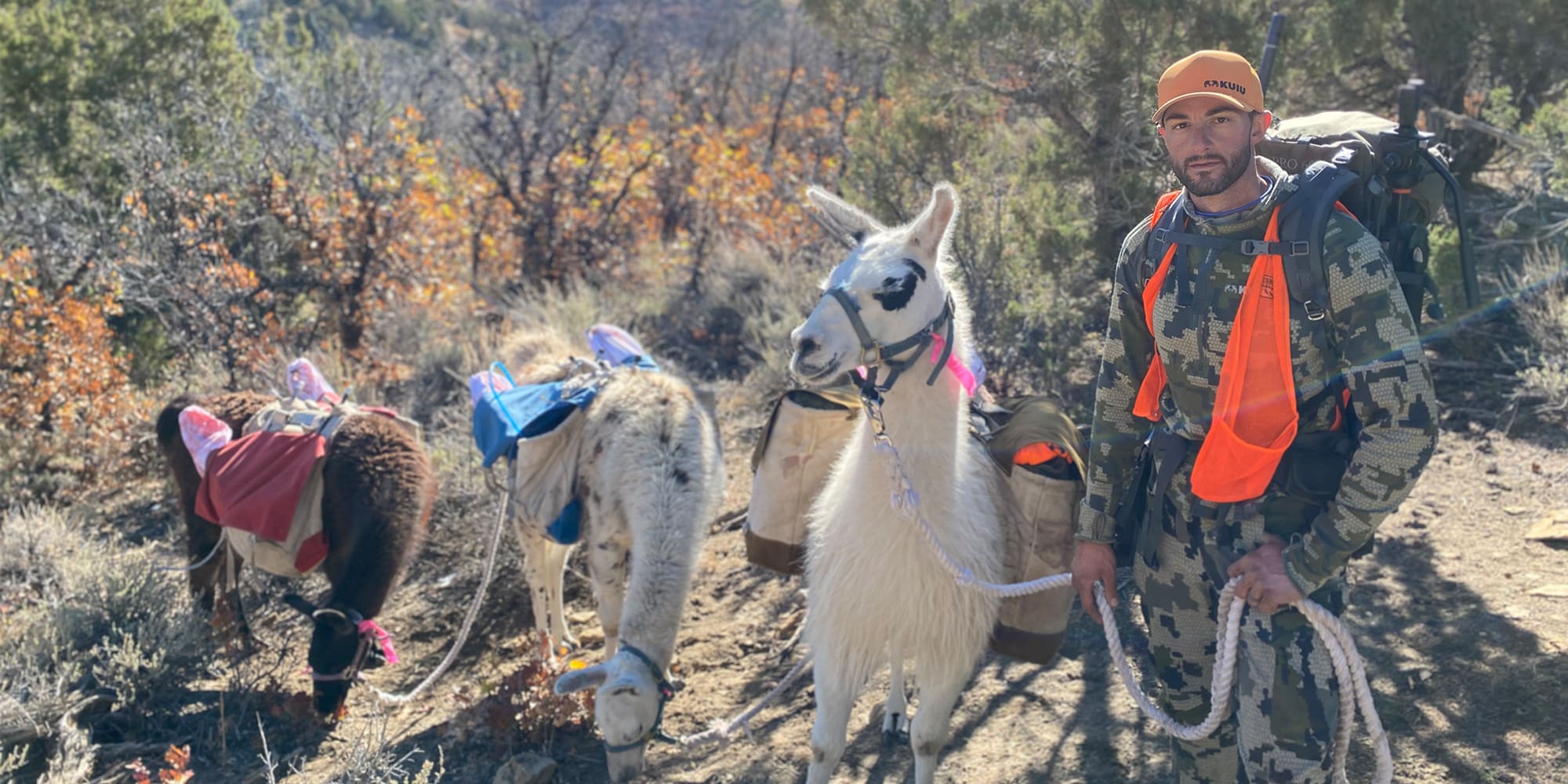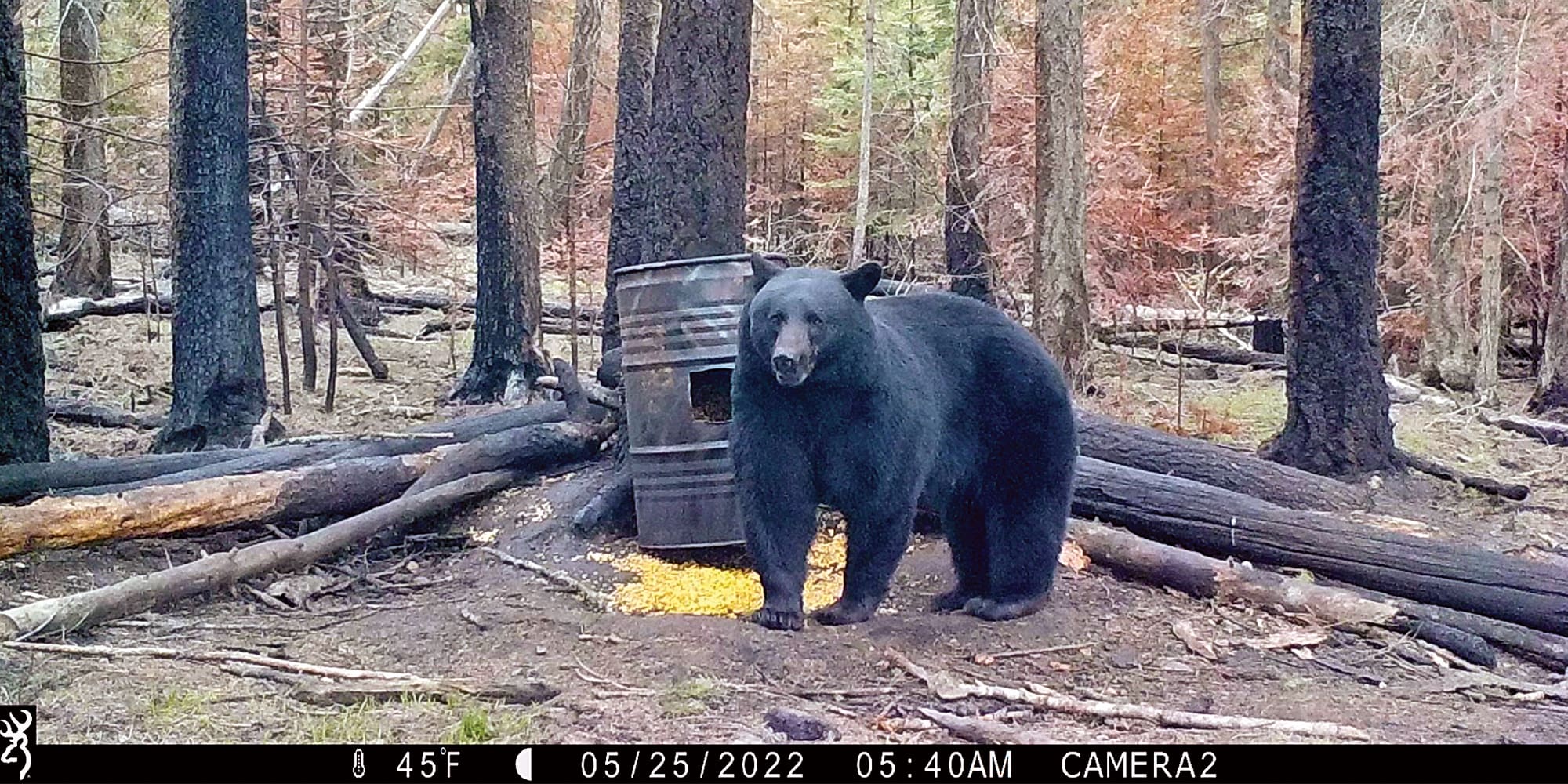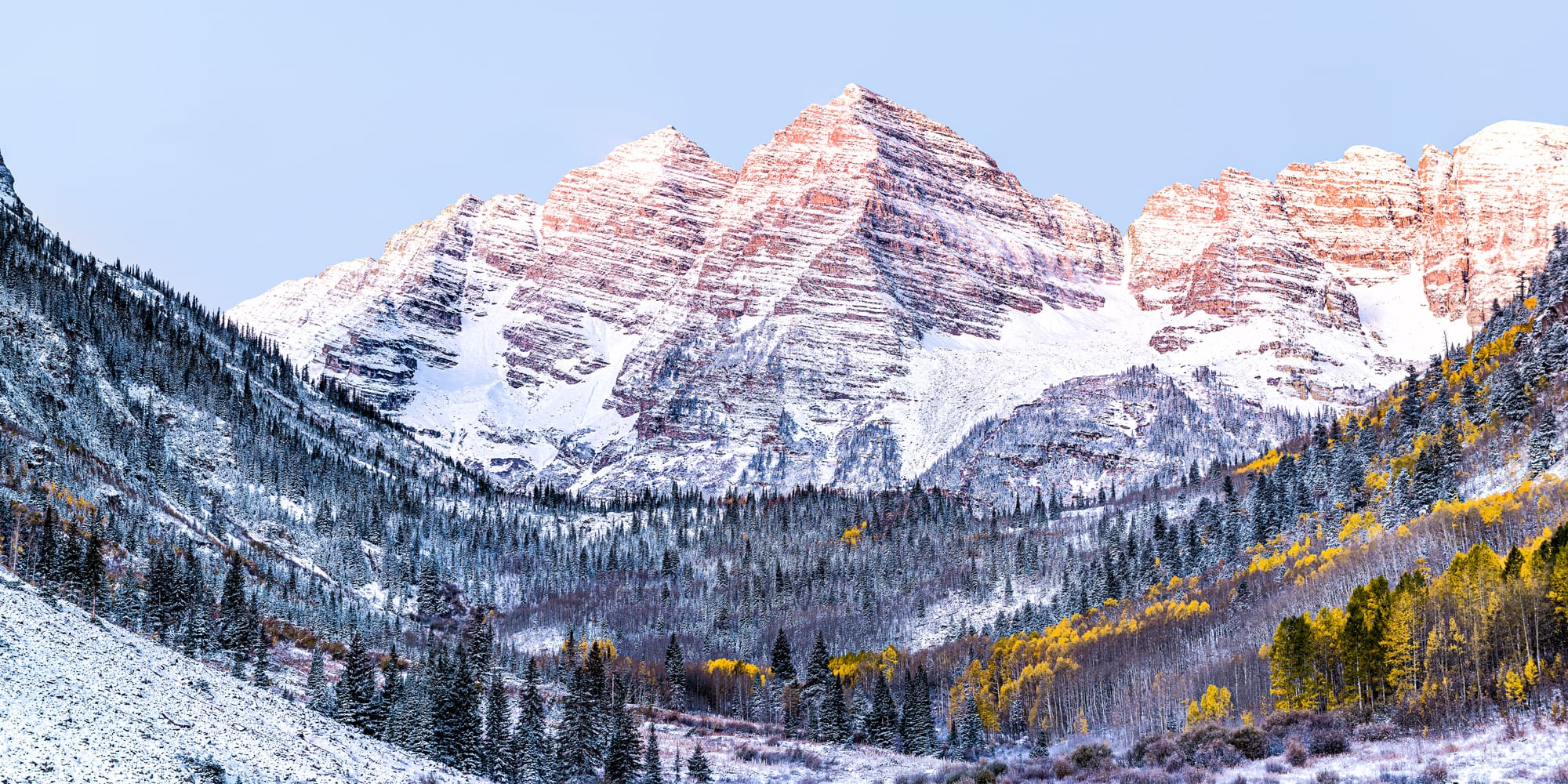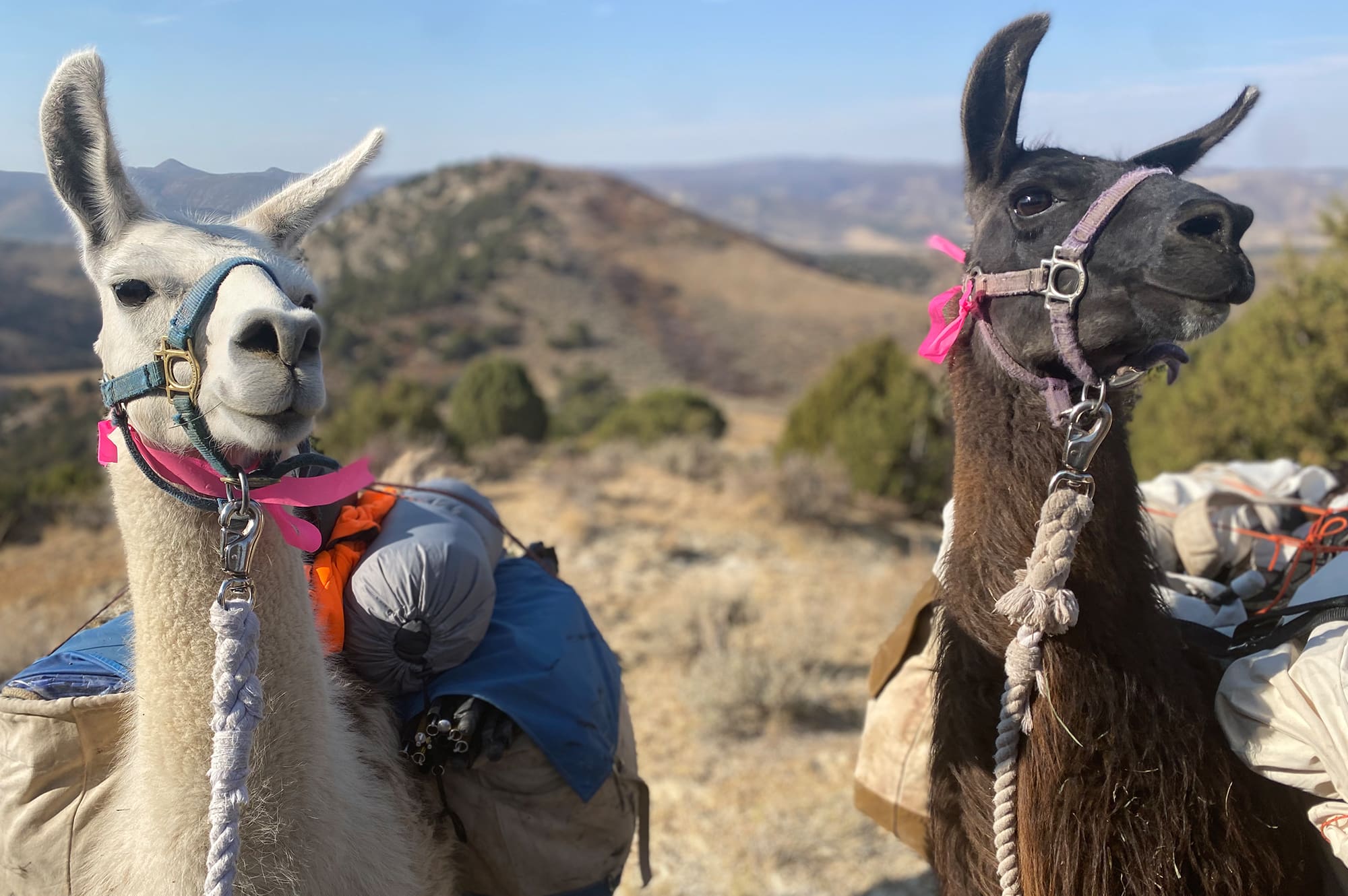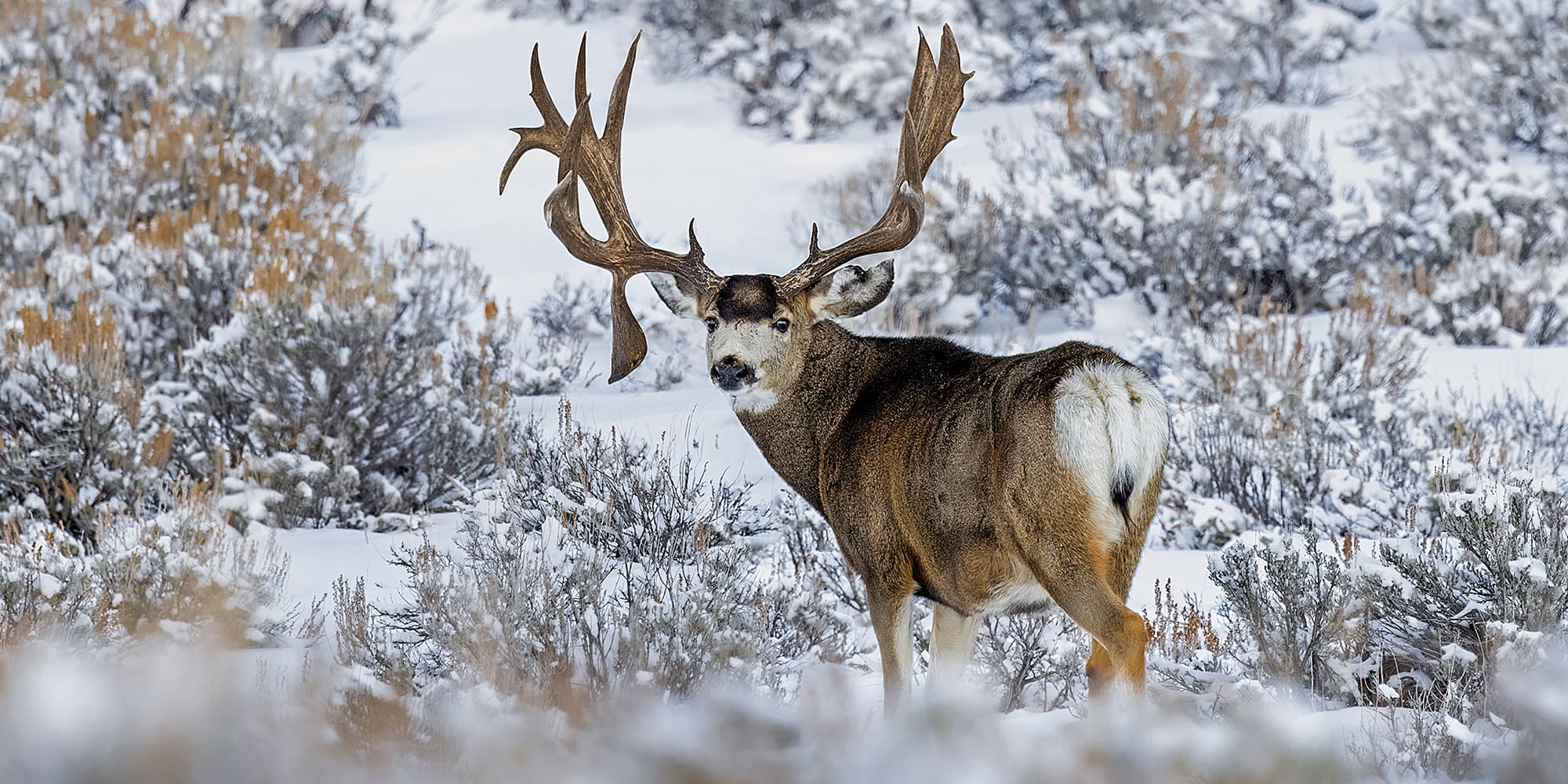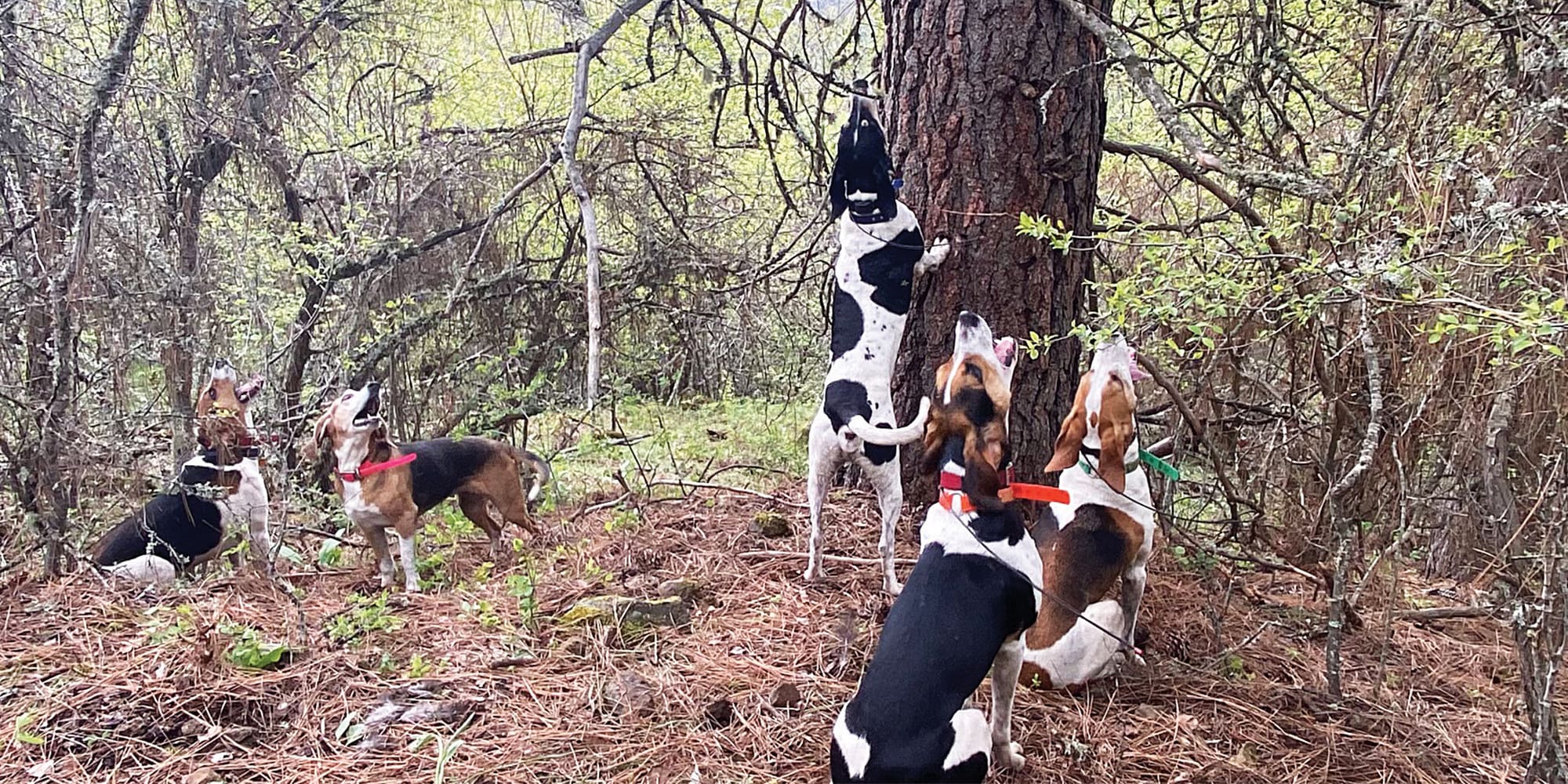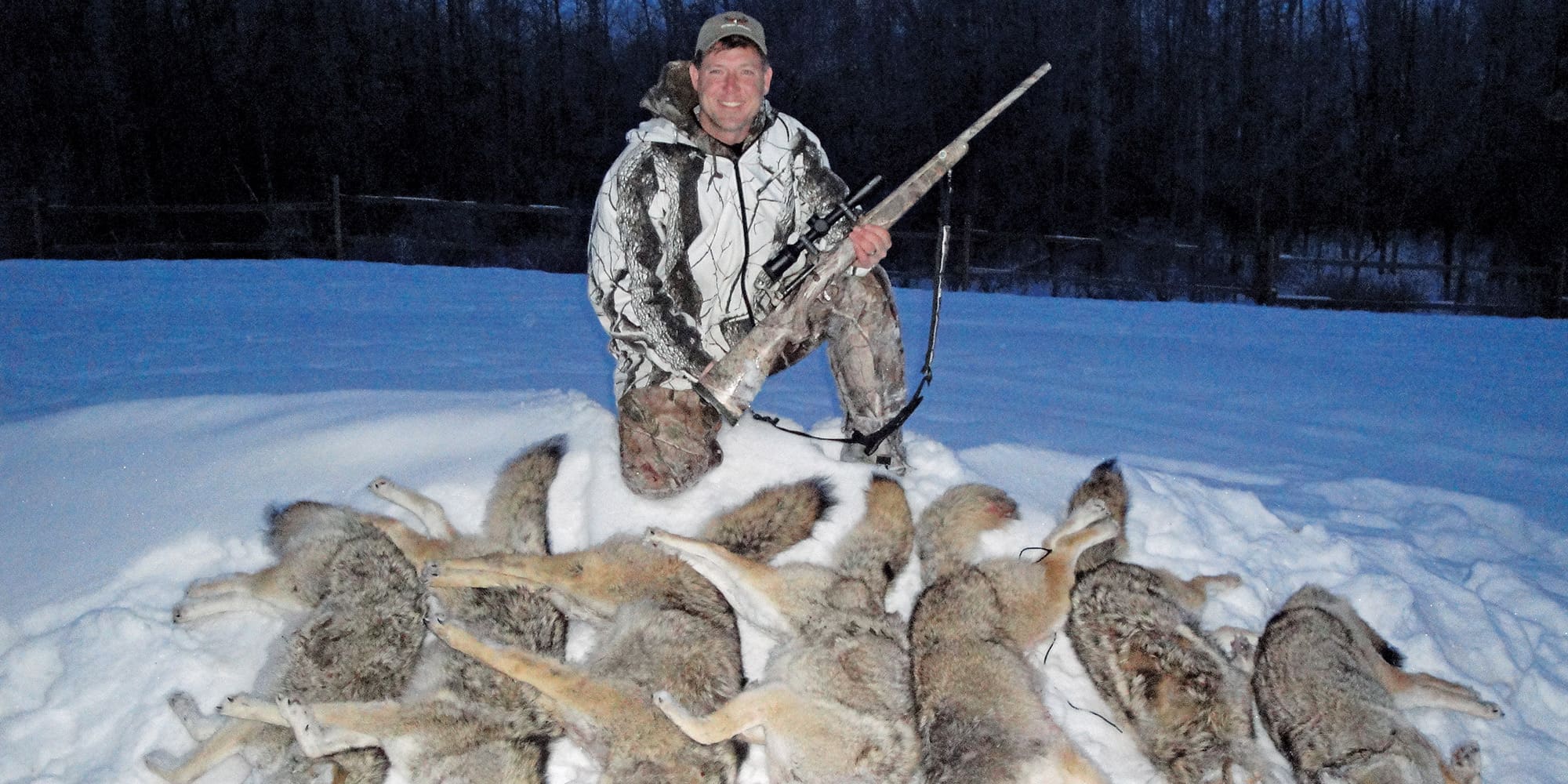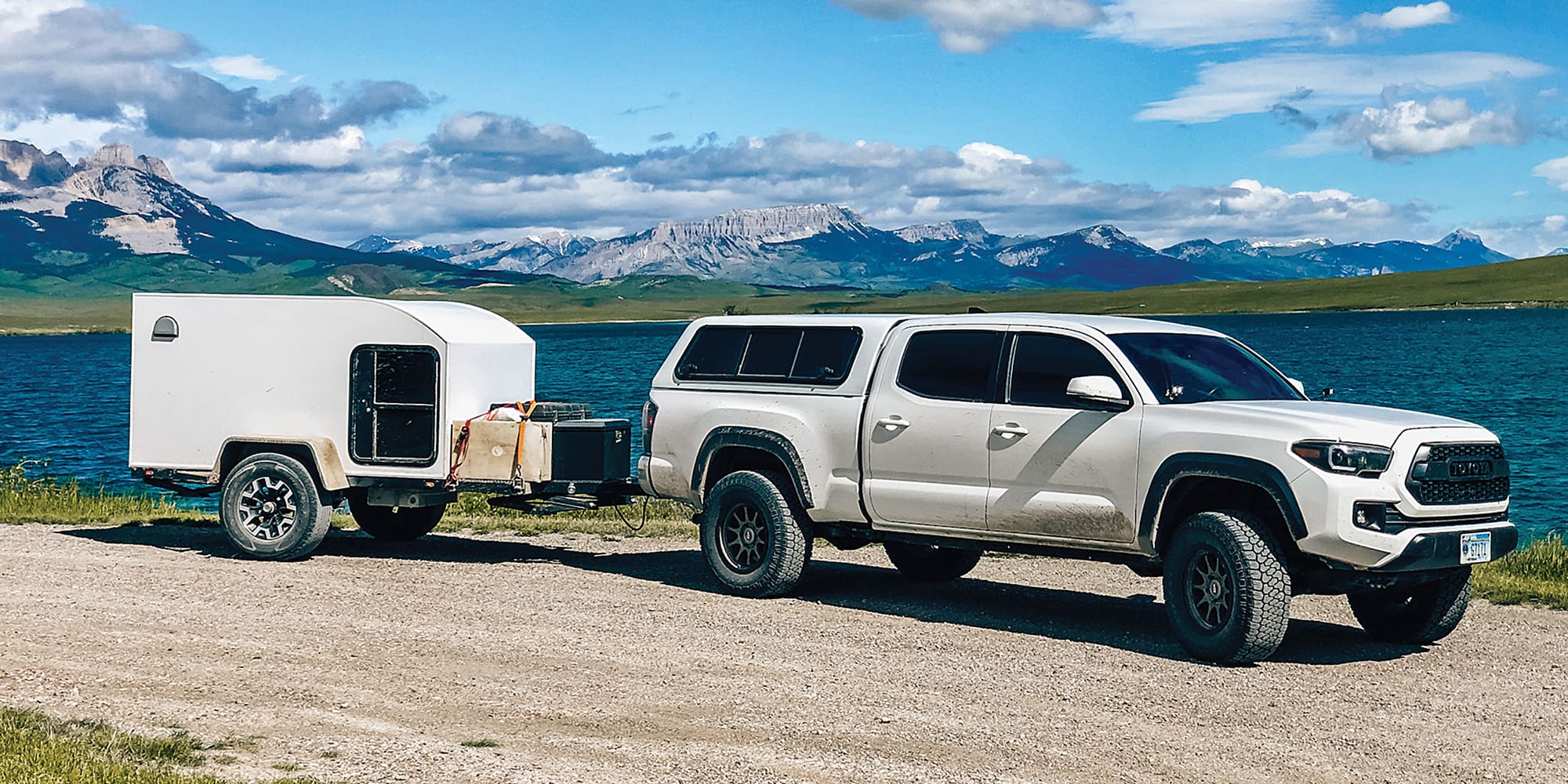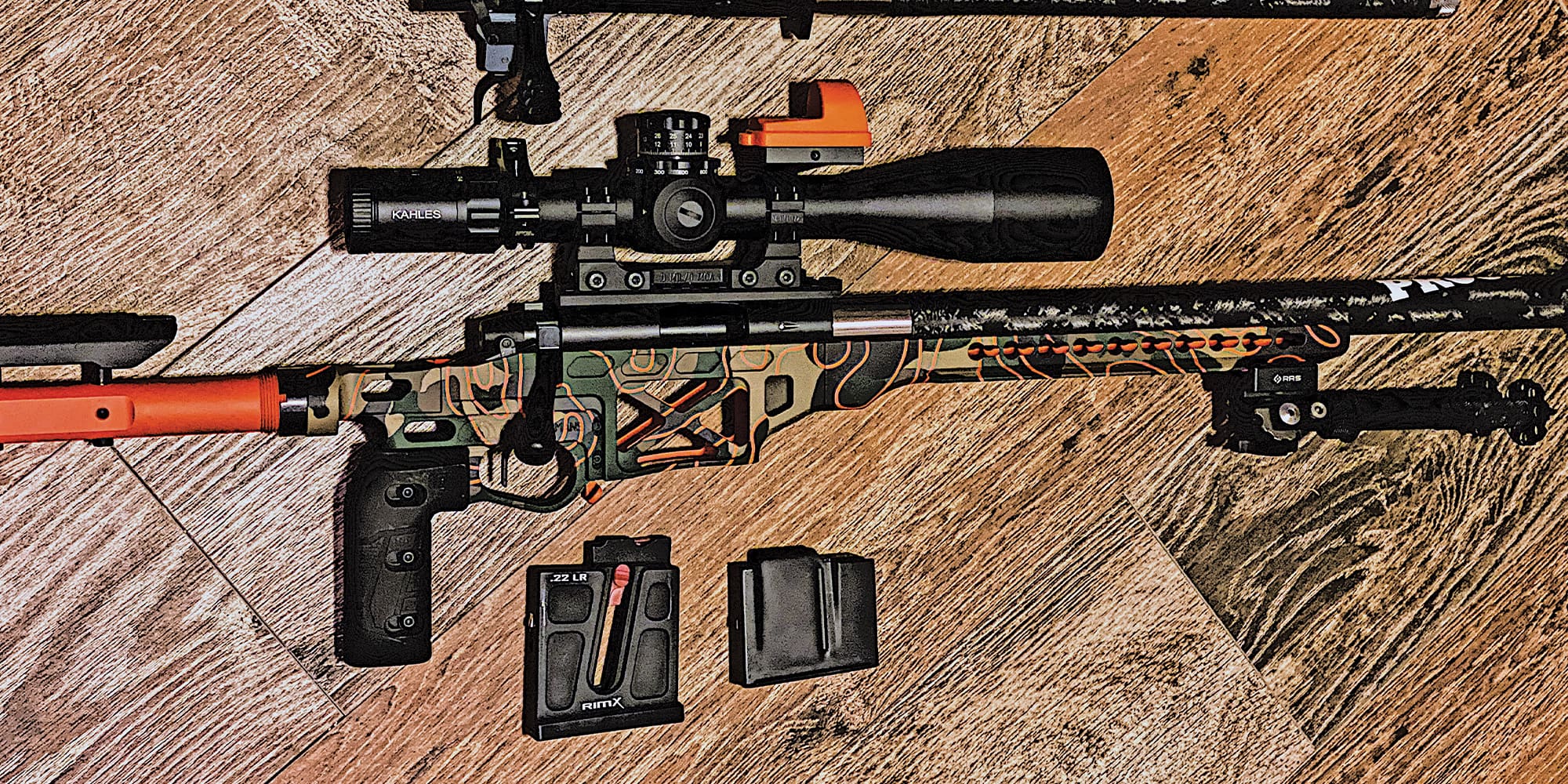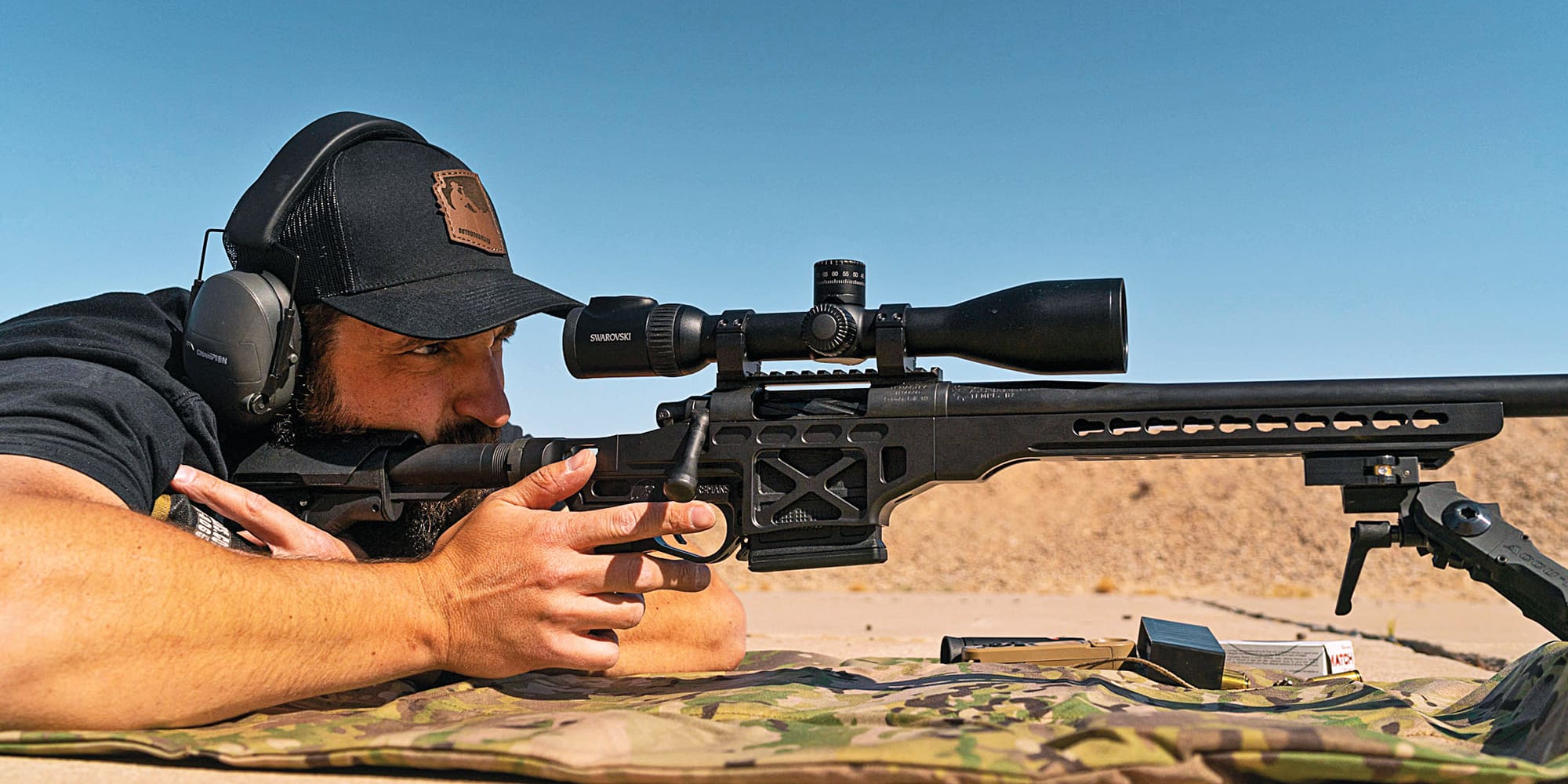
NOTICE: Certain links on this post may earn a commission for Western Hunter Magazine from Amazon or our other affiliate partners when you make a purchase. Thank you for your support.
Llama Logistics: Considerations For a Foolproof Plan
In the first article, I mentioned the need to complete some logistical planning to overcome the initial hurdle of using your llamas. In this final article of my llama series, I’d like to cover a few topics to keep in mind as you navigate your pre-hunt planning.
Efficiency of Movement
Moving efficiently through country can extend your distance of travel and lessen the wear and tear on your llama.
As a backpack hunter, there are times when going straight up or straight down the mountain provides an advantage, regardless of how physically taxing it may be on our body. I’d urge you to avoid or sparingly traverse terrain in a straight-up or straight-down manner when leading llamas under packed weight.
Be sure to use game trails. There’s a reason these backcountry highways have been created by wild game. They’ve already done the work of determining the least physically taxing way to get up and down the mountain. They typically provide a path with more open movement and a lower chance of your packed load snagging onto something.
When traveling straight up or straight down, allow for breaks. The general rule of thumb is that if you’re tired, they’re tired. While resting, I like to have my animal turn sidehill. This allows the hind quarters or front quarters of the animal to recover. Depending on the weather, I may even look for the next location with shade and make it a point to move from cover to cover.
When I stop to rest, I’m always reanalyzing panniers and how the load is sitting on my animal. If you have a partner, I’d recommend one person to be at the rear of the pack. This allows for a constant view of how loads are shifting and potential issues of panniers getting stuck on any vegetation you’re passing through.
If you’re savvy with today's mapping software, create routes overlaid onto game trails that are visible in aerial view. I do this quite regularly, regardless of whether I’m using stock, as good hunting locations are often not right off a main trail.
A llama’s typical pace can be clocked at about 2 MPH. In almost all cases, your own health and stamina will be the determining factor as to whether or not you can maintain that clip over lengthy distances. Keep that information in your back pocket as you begin to determine your routes. It will act as a good reference as to how long it should take to get in and out of particular locations.
Llama Locations
Ground Conditions
Determining where and how to secure a llama can be an intimidating decision for someone who has never done so. The following should act as a guideline of things to look for when picking a location.
Determine your footing–meaning, what is the ground composed of? What condition is it in? When I secure a llama to a particular location, I am looking for hard ground. Bogs, marshes, and any other type of ground that holds too much moisture are not good locations for securing a llama. A number of problems can arise in an area with too wet of footing. Wet terrain doesn’t allow the llama a place to bed. Slippery, thick footing can create an overactive animal that is constantly repositioning to gain stability and wasting needed energy or time to rest. And of course, the possibility of pulling a muscle from unsteady footing is always a possibility when stationed on soppy terrain. Remember to consider what is going to happen to your llama’s location upon freezing or warming temps, will the ground turn into a mud bath upon warming temps? Will the water-soaked area turn into an ice rink when faced with freezing temps?
Feed
A food source for your llamas will play an important role in deciphering where to hunker down for camp and/or just for the day. If you plan on heading to a location with an unknown quantity or quality of food source, I recommend packing in supplemental feed. Pelletized feed is the least cumbersome to pack but also may require that you add water to it. If you are already running on limited amounts of water, this may not be the best option. If additional hay makes the most sense for your trip, I recommend purchasing a compressed bale, splitting it open, and dividing the bale as needed between two panniers. There are many different answers to different situations. The important thing is that you now know they exist and can help provide your rental company with the details of your trip that will help answer those questions.
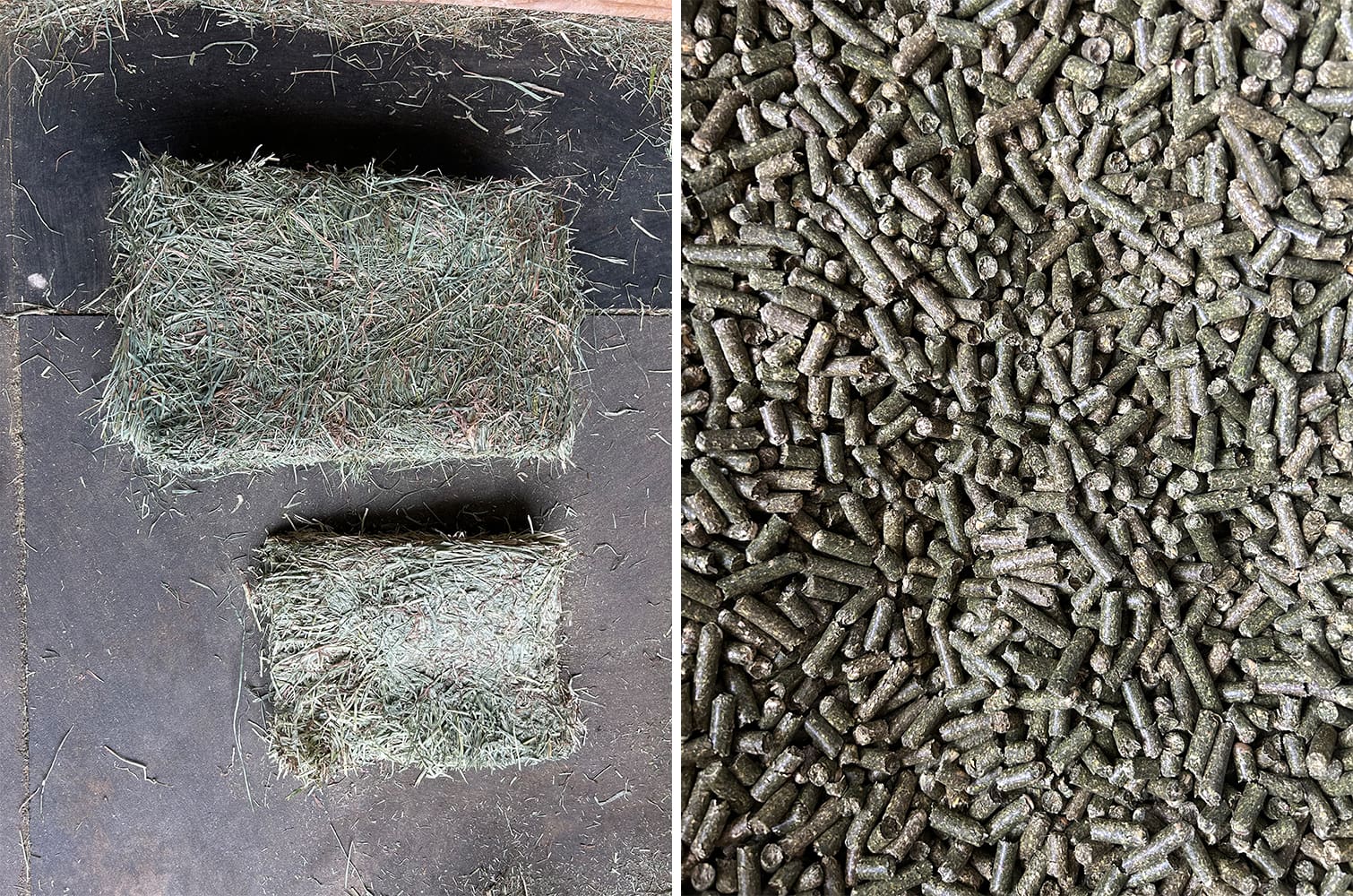
Make sure you research the specific location you plan to hunt and determine whether or not certified weed-free hay/pellets are required. It’s not on the rental company to know specific feed restrictions for the area you plan on hunting.
The first article of this series spoke to the wide array of vegetation a llama can consume. Remember that you should never rely on low-quality forage to get your llamas through the taxing exertion of a hunt. Dead foliage or limited quantities of feed won’t hold the caloric and nutritional value to keep a llama healthy and working to its greatest potential.
Securing your Llamas
How you secure your llamas will be highly dependent on what your rental company offers. However, I recommend you take into consideration what type of terrain you’ll be in and what the weather is likely to be.
Llamas will be tethered in one spot or staked to the ground by a rope typically 15-20 feet in length. When determining a suitable spot for them to be stationed for the day or overnight, it is best to locate an area with a 40-foot diameter, clear of any brush that could result in the lead rope getting wrapped around. I typically utilize topo and aerial maps to determine an area with minimal slope that appears to be free of thick timber and brush. Some vetting will be necessary to locate a spot free of enough brush, or a spot with a lower density of timber, but rest assured it is very doable and, in most cases, easy to locate.
There are many ways to secure a llama in a particular area. Below described are some of the most common:
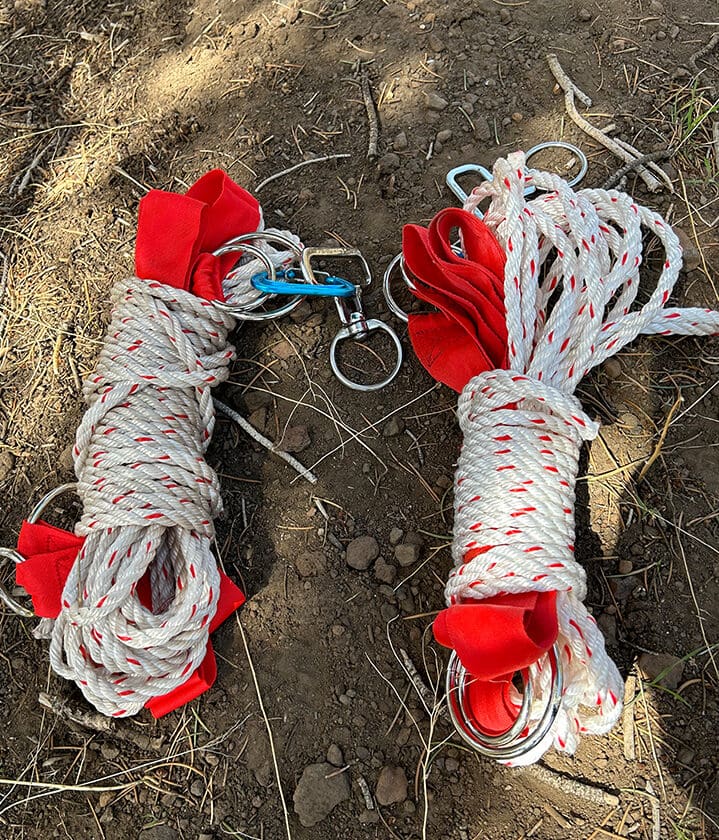
High Lining/Low Lining: The act of tying a long rope between two points (usually trees) either above the head of your pack stock or on the ground and attaching your animal to that rope. High/Low Lining will take a bit more knowledge and skill, as some knots will be required. The added weight of the rope, tree straps, and swivels should be considered, as well. If you hunt thick timber, this may be your best option.
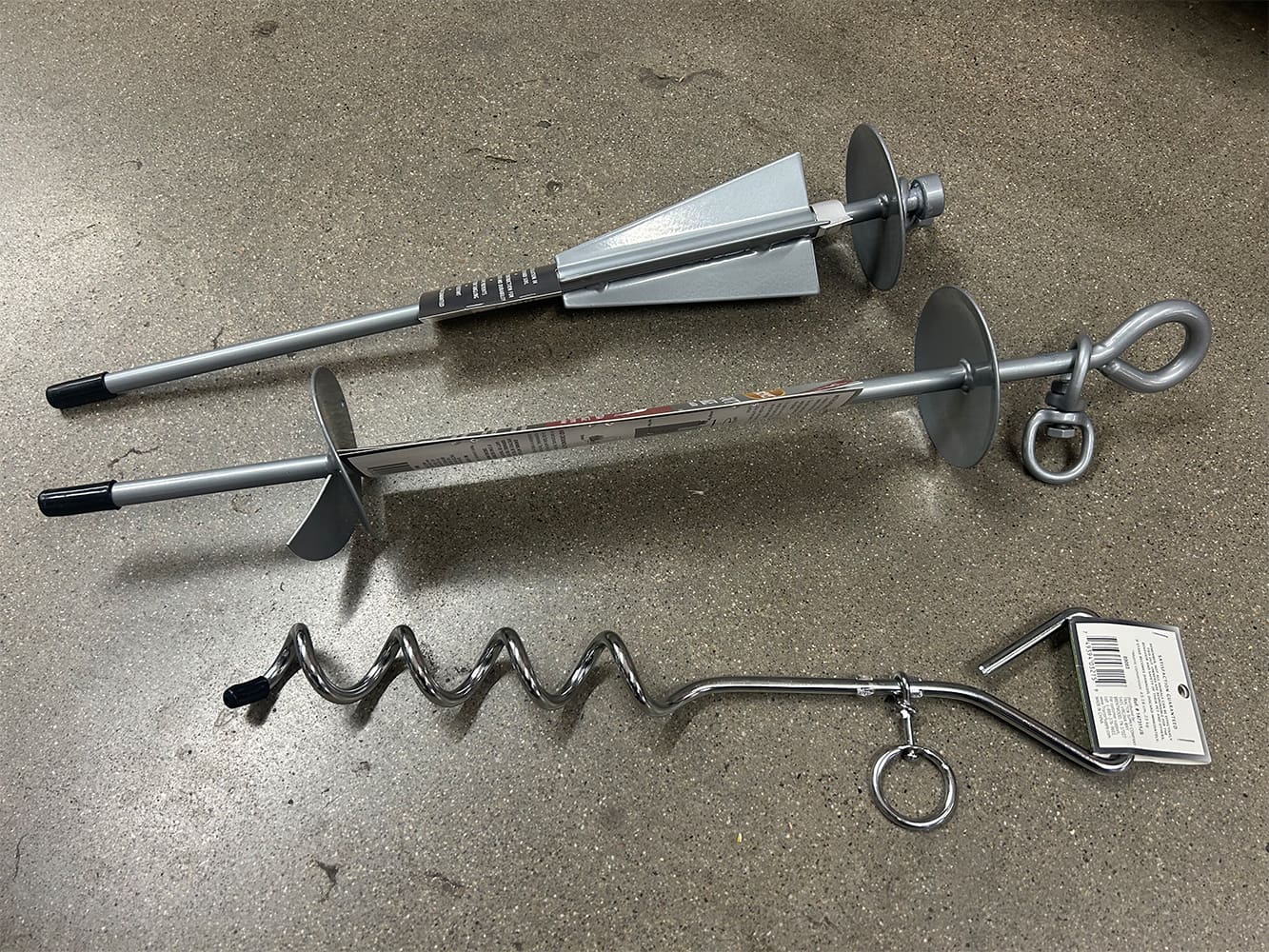
Tie-Out Stakes: Heavy-duty tie-out stakes come in a variety of different configurations and are the most commonly used devices for securing a llama. These stakes can be difficult to pound into and remove from frozen ground. A rubber mallet, hammer, or just a plain old rock can be used to drive the stake in. Some configurations come in a corkscrew design and can be spun into the ground. If you hunt late season in frigid temps, expect putting a stake in the ground to be near impossible. In such cases, I have tied the lead to a large rock and stacked other rocks upon it to create enough weight to dissuade a llama from traveling too far.
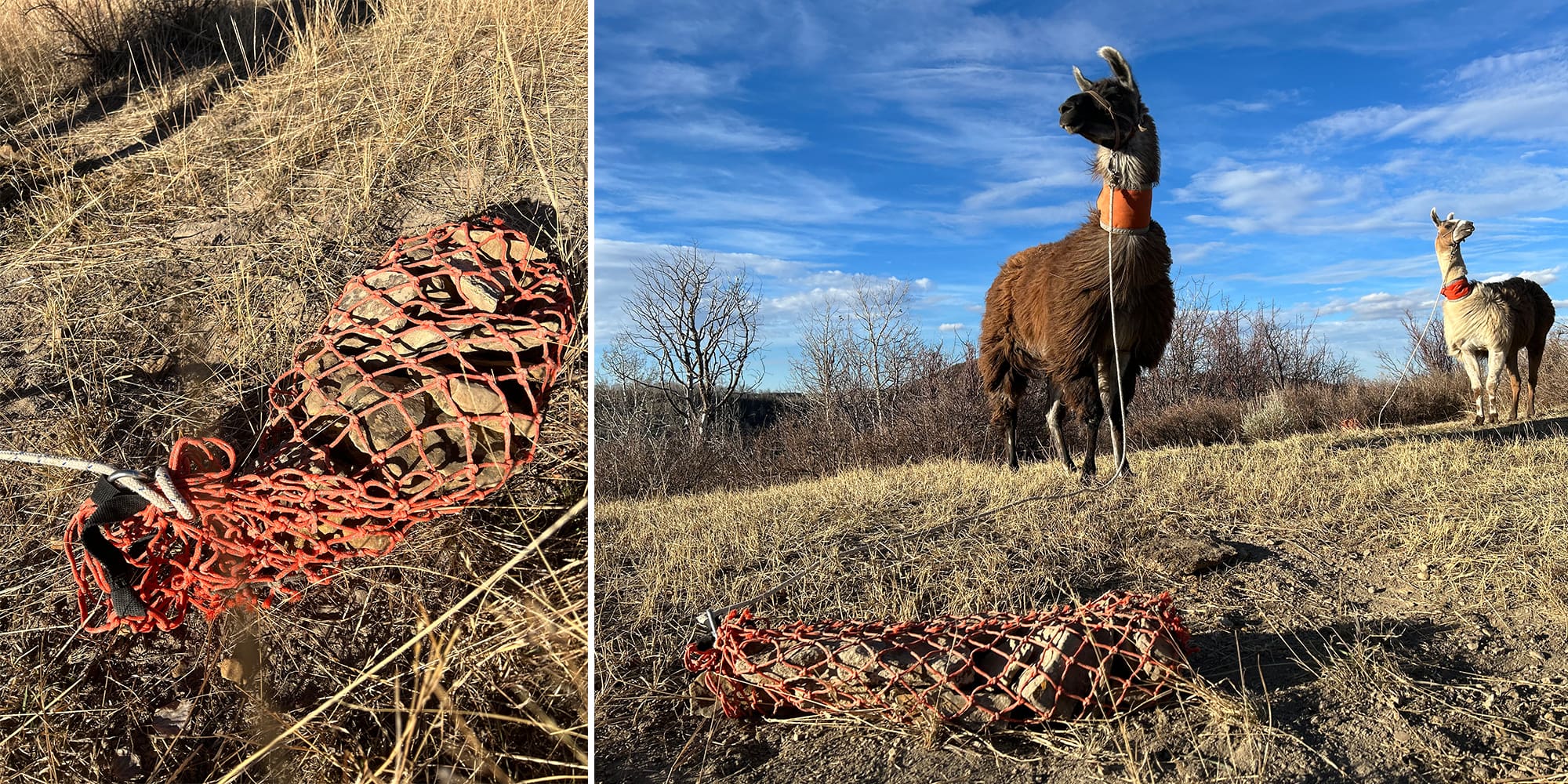
Rock Bag: The rock bag is a lightweight nylon woven bag that can be filled with rocks. If you know rocks are hard to come by in your hunt area, this may not be a preferred option. Keep in mind that these bags are often light enough to be drug by a llama that is adamant about moving around, so don’t be surprised if you come back to them outside of the immediate area they were placed in.
Panniers: Filling your panniers with rocks is an option in a pinch. Like the rock bags, it may be difficult to backfill the pannier with enough rocks to make it immovable. A large moving pannier may spook an animal who has never been presented with that scenario, as well.
Tree Anchoring/Tying: When securing to a tree, cut or break away any rigid limbs that could impale or injure the llama. When attaching the lead rope to the tree, anchor it to a thick limb or, preferably, to the trunk above a location where it branches off. This will prevent the rope from sliding down to the base of the tree. It’s also recommended to anchor off at or above the head level of the llama to prevent a leg from getting over the slack.
When tying any pack stock to an object, it is important that the rope can be untied quickly, that the knot does not tighten under pressure, and that the knot can be undone or released under pressure. Many knots accomplish this–ask your rental company which they prefer, as there can be pros and cons to each.
Tying or anchoring to a tree should never be considered a permanent method of placing a llama. It doesn’t offer the ability to feed or bed. It’s also not meant to be a solution if you plan on being out of eyesight of the animal. Tying to a tree may be useful when saddling or loading panniers onto a llama without a partner, while you’re processing an animal, or any other situation in which you find yourself within eyeshot of the llama but needing to relinquish control.
Research your hunt area to confirm that tying off to a tree is legal. In certain protected areas, tying off to a tree for any length of time is illegal.
Be sure to have an open line of communication with your rental company before your planned trip. A good rental company should and will appreciate your desire to educate yourself and have a thorough understanding of what you are about to undertake. There are always discrepancies from one renter to another and from llama to llama, so don’t be afraid to ask questions, regardless of how elementary they may seem.
My hope is that this series of articles equips you with just enough information in hand to take a leap out of your comfort zone. If you didn’t before, you now know a guy from the suburbs with no extensive llama packing history who got it done… So, why not you? Adventure is waiting.


